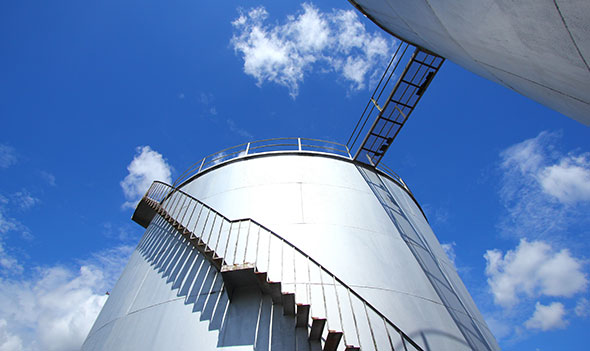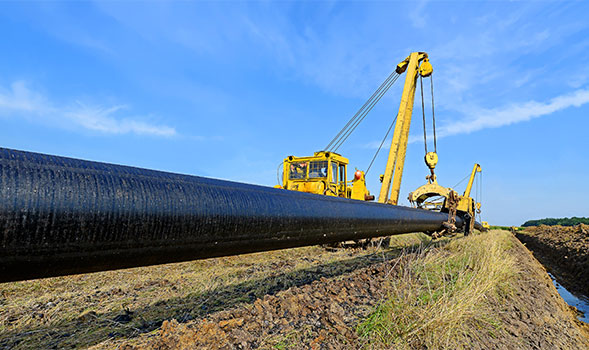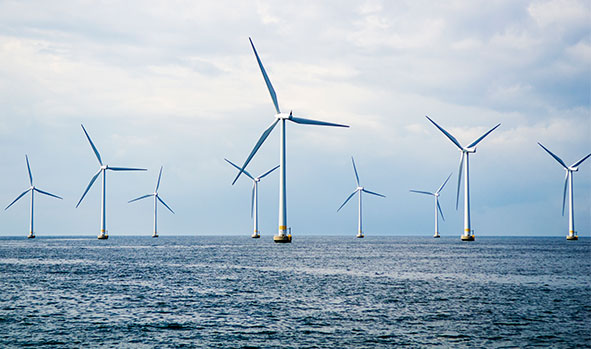Cathodic Protection Services
Normally used in conjunction with coating systems, cathodic protection is a dynamic preventive measure that can stop or reduce the rate of corrosion in aggressive soil or electrolyte conditions.
Electrochemical in nature, cathodic protection is used to prevent corrosion on buried or submerged metallic structures such as pipelines, storage tanks, and offshore structures.
Since 2015, Lad Company Limited has been at the forefront of advancing the science of cathodic protection and today ranks as one of Iraq’s leading specialist corrosion prevention companies. With highly trained engineers and technicians certified at various levels. supply, install, and maintain any type of cathodic protection system. Please select from the categories below, to learn how Corrosion Service is able to ensure the longevity of your assets.
The History of Cathodic Protection
London 1824, cathodic protection papers were presented by Sir Humphry Davy to the Royal Society, and shortly after the first application of cathodic protection was to attach sacrificial anodes to the ship HMS Samarang. The anodes were made from iron and were attached directly to the hull clad copper sheath below the waterline. They were successful in dramatically reducing the corrosion rate of the copper. An unintended side effect caused additional marine growth on the copper hull and significantly reduced the speed of the ship. It was then decided to remove the anodes and let the copper corrode.
Michael Faraday was Davy’s assistant and continued his research following Davy’s death. In 1834, Faraday discovered the quantitative connection between corrosion weight loss and electric current and set the path for cathodic protection as we know it today.
Thomas Edison focused his efforts on impressed current cathodic protection for ships during 1890 and abandoned his efforts shortly after, as he could not find suitable rectifiers or anodes that could be mounted onto the ships’ hulls.
Around 1930 the oil and gas industry realized cathodic protection could reduce leak frequency and reduce the cost to maintain their assets and as they say, the rest is history.
Today cathodic protection is a critical component that protects our various industrial, commercial and consumer infrastructure assets.
Cathodic Protection System Types - Galvanic/Sacrificial Anode
Sacrificial anode systems are based on an electrochemically “active” metal (anode) attached to the asset metal surface (cathode) to be protected from corrosion when both are immersed in an electrolyte like soil or liquid.
Zinc, Magnesium or Aluminum metal alloys are commonly used as the anode, as these metal alloys have a native potential (more negative) than the cathode structure metal (i.e., the metal alloys are more electronegative). The asset metal is typically steel, but depending on the environment and corrosive nature of the electrolyte, the asset metal may be comprised of stainless steel, ductile iron, aluminum and or others.
Sacrificial anode systems do not require an external power source, are self-controlling and require very little maintenance. Their limiting factors is their ability to provide enough protective current for high current applications.
Cathodic Protection System Types - Impressed Current Systems (ICCP)
These systems consist of a direct current power source having an electrical cable connection to the structure to be cathodically protected and another cable connection to consumable anodes.
When AC power is available, the power source consists of a transformer rectifier. In the absence of an AC supply, alternative power sources such as solar panels, water wheels, wind power or gas-powered thermoelectric generators are commonly used.
Impressed current anodes are available in a variety of metallic alloys, shapes and sizes. Common anodes are tubular and solid rod shapes or continuous ribbons. The various anode materials, include high silicon cast iron, graphite, mixed metal oxide, platinum cladding and carbon steel.
Magnesium anodes or zinc anodes have been utilized for impressed current anodes but are rare and typically used in high resistance soil applications where the existing sacrificial anode systems were ineffective. A DC source is wired to the sacrificial anode to increase the driving force resulting in higher current outputs from the magnesium or zinc anodes.
For land-based assets like pipelines, watermains, etc, anode groundbeds can be horizontally distributed or installed in a deep vertical wells.
For water-based assets like docks, pilings, etc., the anodes are secured to the sea floor, suspended from pilings or secured to support structure.
Cathodic protection rectifiers vary from basic transformer diode rectification providing AC to DC conversion or custom offerings where the wave form is chopped providing high efficiency capabilities. A variety of additional features include remote monitoring, remote control, digital displays, integral GPS synchronous current interrupters, and various electrical enclosure types to house the components based on the environment to be located.




